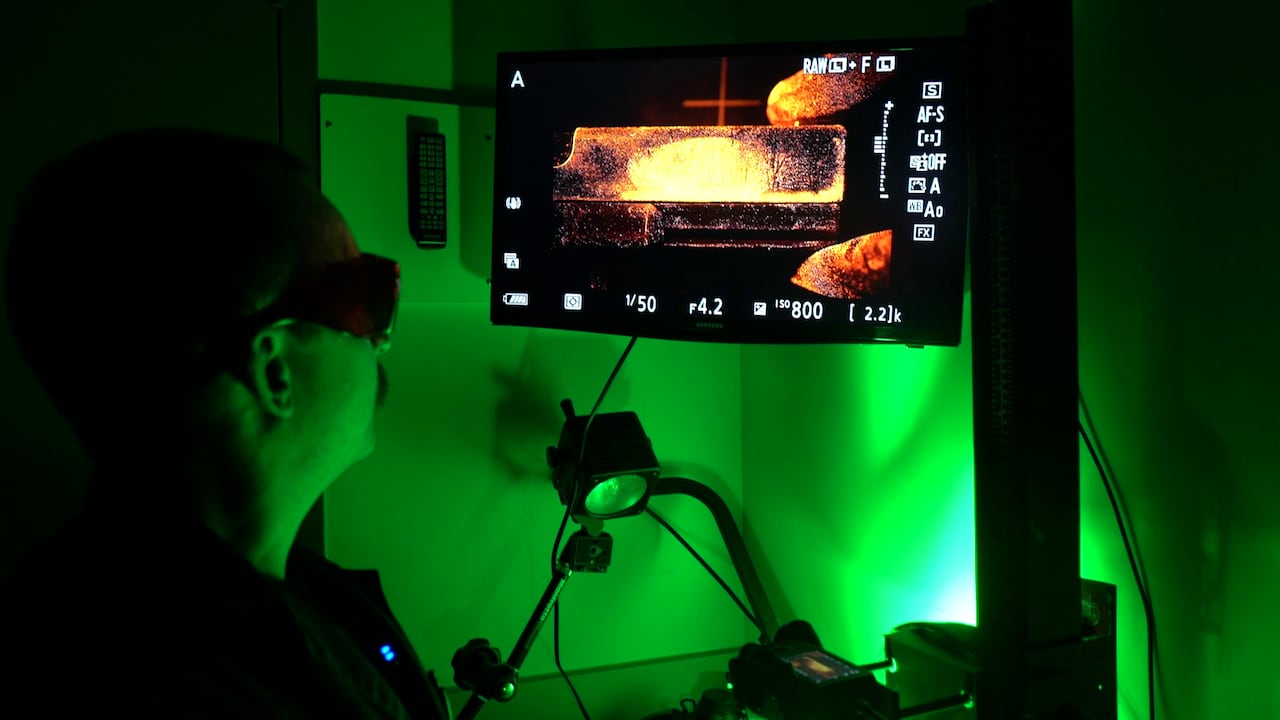With the number of reported shootings in London, Ont., reaching 20 in 2025, police say they’re working tirelessly to pinpoint where illegal firearms are coming from and take them off the streets.
The Guns and Gangs Section of the London Police Service (LPS) has traced the origin of 31 guns so far this year in the Firearms Analysis and Tracing Enforcement (FATE) process.
Police officials gave CBC London an inside look at how that process begins and how investigators learn about everything from the owner’s identity to a weapon’s origin.
DNA, prints and other human clues
After a firearm arrives in the Forensics Identification Section lab, Det. Const. Craig Walsh, a forensic specialist, immediately gets to work looking for clues.
The laboratory deep inside the police station is filled with equipment and technology that makes that possible, but the first step is often simple and time-tested.
“DNA is a huge part of forensics in our world here, so that is my first priority. We bring it in with the least amount of handling possible and we swab the firearm for DNA,” said Walsh.
A cotton swab is moistened and rubbed on any part of the weapon that is textured or grooved to search for sloughed-off skin cells, bodily fluids or other sources of DNA.
After the swab is sent to the Centre for Forensic Science in Toronto, it’s not unusual for DNA from multiple people to be detected. Walsh said those are valuable clues that could lead to arrests and gun seizures.
Once DNA is collected, the next clue Walsh looks for is fingerprints.
“If somebody has handled this firearm, there’s a good chance they left fingerprints on it,” Walsh said, pointing to the Glock handgun he used for a demonstration. It’s among the common weapons that pass through the lab.
Walsh uses a brush to dust the smooth parts of the weapon’s surface with a fine powder that is often invisible to the naked eye.
We have a high success rate in determining where guns were originally manufactured and the last point that these guns were sold.– Det. Sgt. Jon Meinen, London police Guns and Gangs Section
A perfect fingerprint is revealed when a laser is shone on the gun, as the powder fluoresces in the light.
“I would take this fingerprint back and submit it to the RCMP national database where we store all of our fingerprints,” said Walsh. “If we were to have a suspect in mind, I can do a direct comparison … if we have their fingerprints on file.”

Another kind of fingerprint
Human fingerprints aren’t the only kind of interest to police.
Guns have them too, said Walsh.
In the LPS’s indoor shooting range, a compact setup, complete with a water tank and pump, allows Walsh to fire a gun and preserve the bullet.
That gun’s fingerprint is left behind on the bullets and casings that come out of the process.
“Every time a firing pin strikes the primer on a cartridge, it leaves a mark. Every single primer, when you look at it microscopically, leaves an individual mark on every cartridge case,” said Walsh.
“Even the projectile that goes through the barrel — there’s lanes and grooves down that barrel, and those leave individual marks on each bullet.”
When the gun’s fingerprint is uploaded to an international database, it can be checked against bullets and casings left behind at other crime scenes in the hope of finding a match.

Criminals’ behaviours change
According to Walsh, the behaviour of the criminals who use the weapons changes over time, meaning forensics experts have to adapt.
One example is the emergent but uncommon issue of ghost guns — 3D-printed weapons that don’t have identifying markers like factory-etched serial numbers.
Despite the difficulty in tracing them, clues like DNA and fingerprints can be present, he said.
The guns that usually pass through the lab are store-bought handguns, said Walsh, and criminals are increasingly choosing not to tamper with the serial numbers.
He said that’s likely because criminals know police can recover those numbers.

According to Det. Sgt. Jon Meinen of the Guns and Gangs Section, work in the lab translates directly to progress in the field.
“We have a high success rate in determining where guns were originally manufactured and the last point that these guns were sold.”
In terms of origins, the guns come overwhelmingly from south of the border. Thus far this year, 76 per cent of traced guns have entered the region from the United States. In 2024, it was 90 per cent, and in 2023, it was 95 per cent.
Meinen said guns are also most often linked to gang and/or drug activity, and the number of guns traced has remained fairly consistent over the past several years.
He said the primary objective of finding their origin helps police work toward ensuring they never arrive in London in the first place.
“If we can figure out how the guns are coming into our city, and we can stem that, that will in turn mean a reduction in gun activity.”







